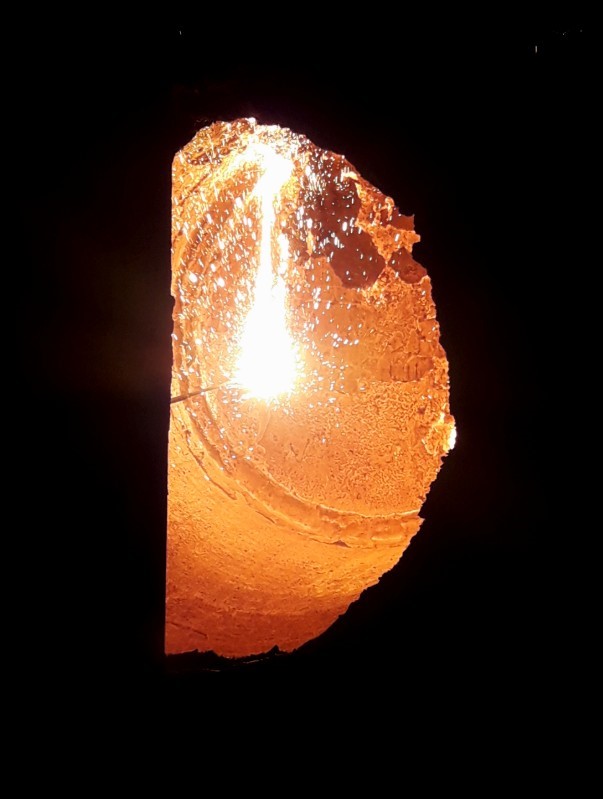Thermal
Peak Temperature: The temperature of the working lining is the temperature of the steel. The temperature is very high from the refractory point of view and thus requires high temperature resistant refractory materials.
Thermal Shock: Thermal cycling is of huge concern. The pre-heat of the lining is somewhat important as far as thermal cycling is concerned. The lining suffers from temperature loss when the ladle goes for slide gate inspection after slag dumping. If the activities in ladle slide gate plate inspection/ replacement involve too many activities the temperature drop is even higher. But when steel is again tapped from the converter the lining suffers from thermal shock. Thus the thermal shock depends a lot on the operating conditions and suffers from thermal cycling in every heat.
Mechanical
Impact: The tapping force of the tapping stream is the major impact force on the lining and it depends on the angle and the height of the stream and the time it takes to form sufficient liquid bath so that it can act as a cushion for the coming stream. The position of the impact pad is essential as the shift in its position will lead to more wear if the stream does not fall on it.
Abrasion: The wear of the bottom lining varies proportionally with the gas flow rate of argon. The wear increases with the increase in the bath movement.
Applied stress: As the height of the working bottom being low the stress in the vertical direction is low.
Chemical
Dissolution: Wear by dissolution depends on the chemical compatibility of the slags with bricks. Slags are wide-ranging in chemistry but are basic in nature and therefore a basic refractory is preferred. Basic bricks are the preferred choice. Alumina or alumina spinel are some of the preferred choices because they react with slag to form a protective layer.
Penetration: Penetration is caused by low viscosity metal/ slag or highly wetting metal/slag. The slag is in contact with the lining for a fair amount of time and these can be driven deep into the porous refractory especially during the tapping time due to the high impact force of the stream.
Thermo- Mechanical
Strain of thermal expansion– incase of monolithic lining the joints between the working lining for the bottom plug and the bottom is to be filled with ramming material to impart compressibility to the expanding mass.
Chemical Mechanical and thermo mechanical chemical
Spalling of the penetrated zones- One of the key wear mechanisms. As the high impact force of the stream cause micro/macro crack on the impact area and allow the slag (which sits on the bottom) to penetrate deep through the cracks. Further, thermal cycling leads to the spalling of the penetrated zones (Cumulative action of thermal(thermal shock), chemical-(penetration) and mechanical(impact).
Material Selection
Working bottom impact pad: The current practice is the use of a monolithic precast piece made up of high alumina-magnesia spinel combination. The impact pad is lifted with the help of the crane and fixed with a 12mm bed of air set mortar which is being fixed underneath.
When using brick, 250 mm high dolomite quality bricks are used. The installation requires using of mortar on all four sides.
Working bottom: The best practice employed is using a monolithic precast layer made up of high alumina-magnesia spinel combination mix. This is installed on the 12mm bed of air set mortar.
When using brick, 175-200 mm high dolomite quality bricks are placed. The installation requires using of mortar on all four sides.



